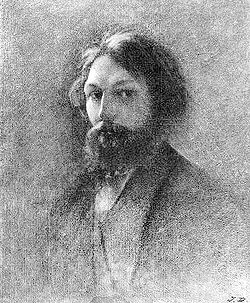Top Qs
Timeline
Chat
Perspective
Jules Dupré
French painter (1811–1889) From Wikipedia, the free encyclopedia
Remove ads
Jules Louis Dupré (French pronunciation: [ʒyl lwi dypʁe]; April 5, 1811 – October 6, 1889) was a French painter, one of the chief members of the Barbizon school of landscape painters. If Corot stands for the lyric and Rousseau for the epic aspect of the poetry of nature, Dupré is the exponent of its tragic and dramatic aspects.[1]
This article has multiple issues. Please help improve it or discuss these issues on the talk page. (Learn how and when to remove these messages)
|
Remove ads
Biography
Dupré was born in Nantes. He exhibited first at the Salon in 1831, and three years later was awarded a second-class medal. In the same year, he came to England where he was impressed by the genius of Constable. From then on, he learned how to express movement in nature; and the districts around Southampton and Plymouth, with their wide, unbroken expanses of water, sky and ground, gave him good opportunities for studying the tempestuous motion of storm-clouds and the movement of foliage driven by the wind. He was named an Officer of the French Légion d'honneur in 1848.[1] His daughter Therese-Marthe-Francoise also became a painter.
Dupré's colour is sonorous and resonant. He showed preference for using dramatic sunset effects and stormy skies and seas as the subjects of his paintings. Late in life he changed his style and gained appreciably in largeness of handling and arrived at greater simplicity in his colour harmonies. Among his chief works are the Morning and Evening at the Louvre, and the early Crossing the Bridge in the Wallace Collection.[2]
Remove ads
Selected paintings
- The Windmill (1850s)
- The Old Oak (1870) National Gallery of Art.
- Cows Crossing a Ford, an early work in the collection of the Metropolitan Museum of Art.
- On the Road (1856)
References
External links
Wikiwand - on
Seamless Wikipedia browsing. On steroids.
Remove ads





